Table of Contents
Skillshare vs LinkedIn Learning: An Overview
Skillshare and LinkedIn Learning are popular online learning platforms that attract numerous learners but they’re not entirely the same.
Skillshare is known for its interesting, fun courses on a range of topics, from fine arts through to marketing and lifestyle improvements. On the other hand, LinkedIn Learning focuses much more on skills that can create career opportunities.
In the following sections, we’ll review both sites in terms of who should use them, pricing, courses offered, and more. By the end, you’ll know exactly where to sign up.
Skillshare vs LinkedIn Learning: Who Is It For?
Skillshare
From the time it launched, Skillshare has always been primarily geared towards personal growth. In other words, many Skillshare classes cover creative disciplines such as arts and crafts, photography, and animation. However, this doesn’t mean that Skillshare has no other courses available.
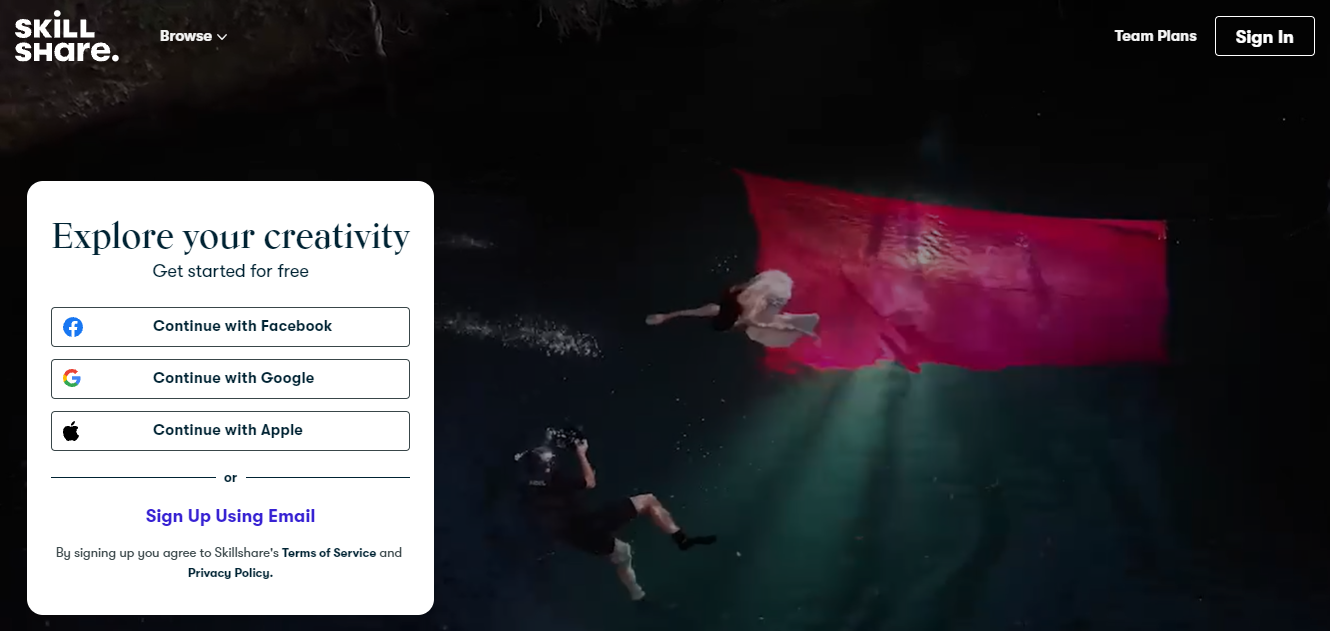
This website provides courses on management, web development, business analytics, and other subjects that could help you locate job opportunities. A significant advantage of this site comes in the form of its free courses which, although not numerous, allow you to get a sense of what the platform has to offer.
If you want to explore a new creative field or discover a new passion, Skillshare might be for you.
LinkedIn Learning
LinkedIn Learning primarily offers courses that will teach you essential business, tech, and IT skills. These courses focus on professional development, which is unsurprising considering that LinkedIn itself is a business-oriented social media site.
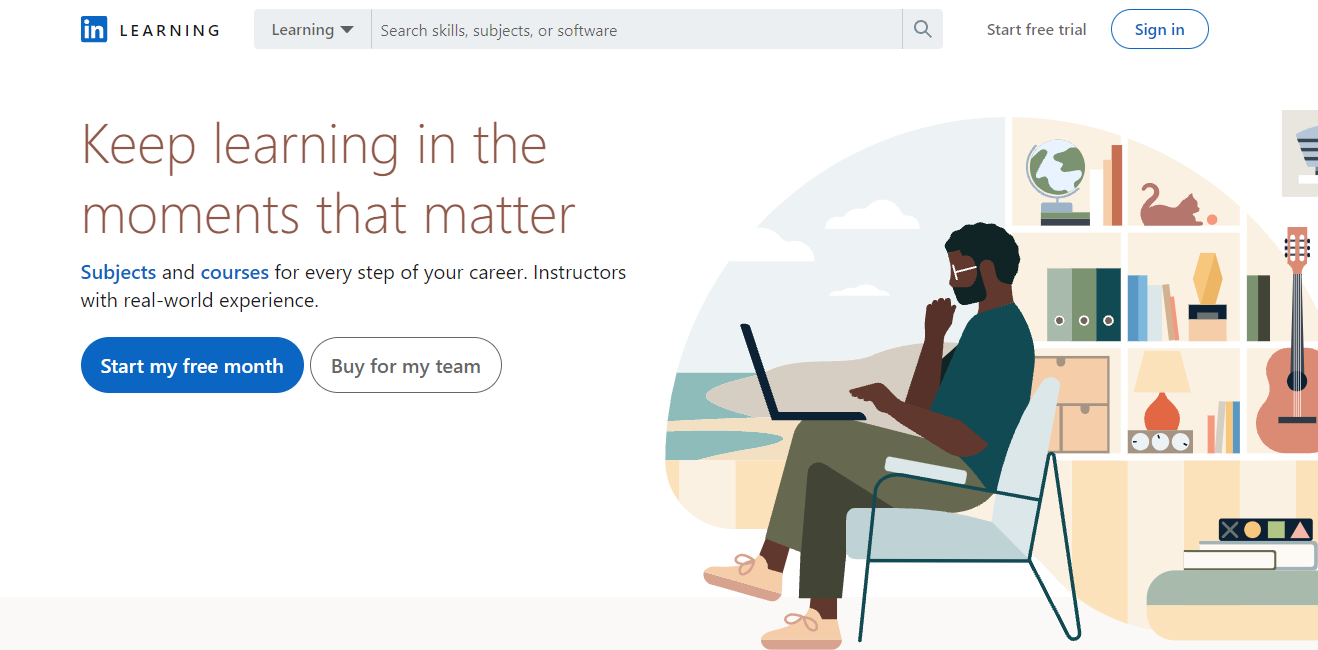
In terms of day-to-day knowledge that you can make use of at a job interview or in the workplace, this website certainly has plenty to offer. For anyone looking to further their work-related skills, answering the question of is LinkedIn Learning worth it might be quite straightforward. The platform is a valuable learning source, especially in terms of professional skills.
Skillshare vs LinkedIn Learning: Types of Courses Offered
Skillshare
Skillshare classes mostly revolve around creative subjects and personal growth topics. All of the courses on the platform are divided into three categories: Create, Build, and Thrive.
Create:
- Animation
- Creative Writing
- Film and Video
- Fine Art
- Graphic Design
- Illustration
- Music
- Photography
- UI/UX Design
- Web Development
Build:
- Business Analytics
- Freelance and Entrepreneurship
- Leadership and Management
- Marketing
Thrive:
- Lifestyle
- Productivity
The Create category is suitable for people pursuing specific careers as well as for those interested in music, art, design, and similar activities.
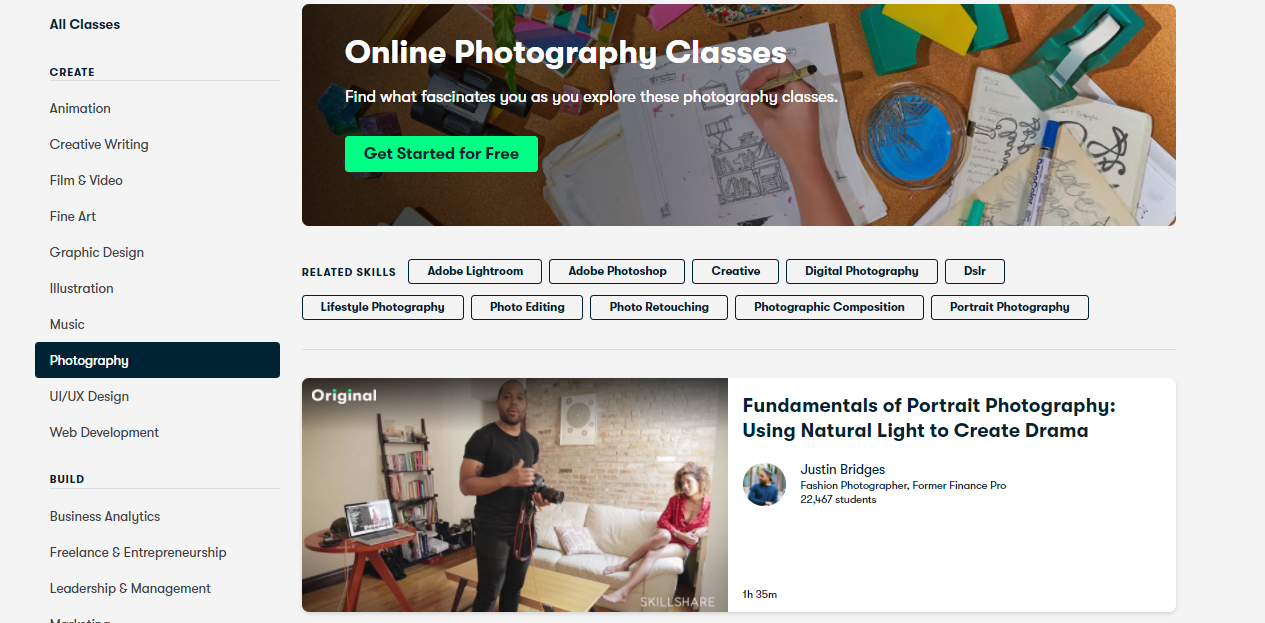
You’ll find a broader spectrum of business skills in the Build category. The courses here teach the evergreen skills necessary for business dealings across all markets. It is well-suited to people looking for corporate job opportunities and entrepreneurs.
Finally, the Thrive category covers personal growth, although courses in the Productivity section can prove useful for work-related skills.
LinkedIn Learning
As a professional development platform at its core, LinkedIn Learning has a heavy emphasis on professional and business skills. The platform divides courses into three categories, which further branch out into various topics. The categories are Business, Creative, and Technology, and they incorporate the following topics:
Business:
- Business Analysis and Strategy
- Business Software and Tools
- Career Development
- Customer Service
- Finance and Accounting
- Human Resources
- Leadership and Management
- Marketing
- Professional Development
- Project Management
- Sales
- Small Business and Entrepreneurship
- Training and Education
Creative:
- AEC (Architecture, Engineering, and Construction)
- Animation and Illustration
- Audio and Music
- Graphic Design
- Motion Graphics and VFX
- Photography
- Product and Manufacturing
- User Experience
- Video
- Visualization and Real-Time
- Web Design
Technology:
- Cloud Computing
- Data Science
- Database Management
- DevOps
- IT Help Desk
- Mobile Development
- Network and System Administration
- Security
- Software Development
- Web Development
Even though there is a fair amount of creative courses, the platform is still more business-orientated.
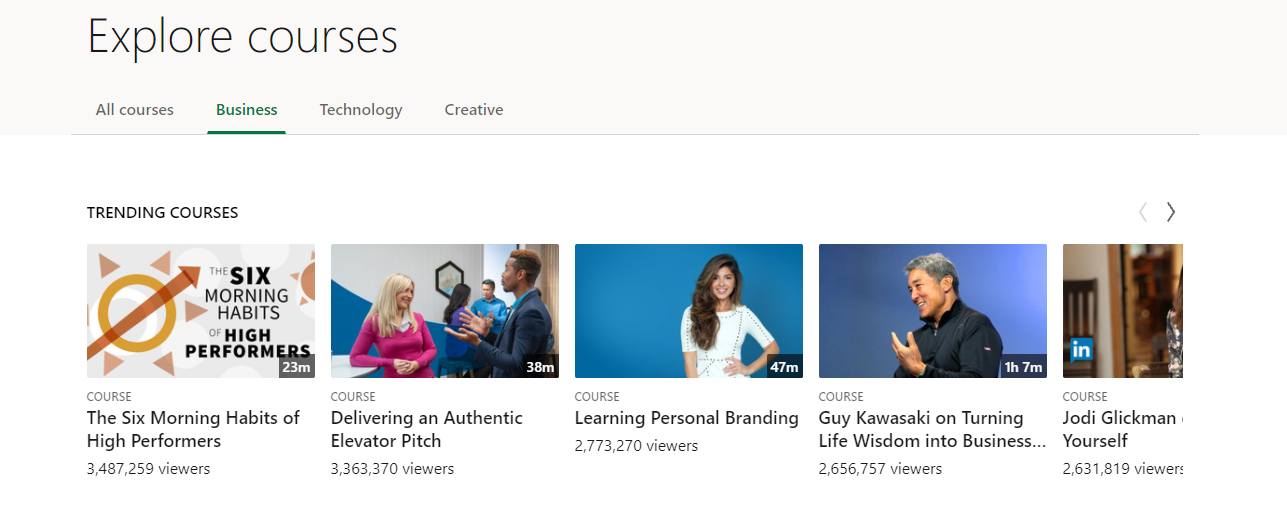
Skillshare vs LinkedIn Learning: Pricing & Refunds
Skillshare
In terms of pricing, Skillshare has two plans: Basic Access and Premium Membership. If you sign up for the Basic Access plan, you’ll be able to choose between about 2,000 free courses. Furthermore, this plan offers access to forums and projects. One notable downside of the free plan is that it comes with ads.
On the other hand, Premium Membership doesn’t have ads and opens up the entire repertoire of courses on the platform. The Skillshare price will depend on the payment options you choose:
- The monthly subscription plan will cost $15 per month.
- Annual subscription plan is $99, or $8.25 on a monthly basis.
In terms of refunds, a customer is eligible for a refund only once, and only for annual subscription plans. Furthermore, this is only available for seven days after the charge. In all other cases, a Skillshare refund won’t apply.
LinkedIn Learning
Rather than a free plan, LinkedIn Learning has a free trial that lasts for one month. Once that period expires, you can either opt-out or choose between two subscription plans:
- The monthly plan, which costs $29.99 per month.
- The annual plan, which you can purchase either with a single $299.88 payment or in monthly installments that will cost $24.99.
While the LinkedIn Learning price point might seem quite high, the subscriptions come with access to every course on the platform along with the appropriate certifications.
On the subject of refunds, LinkedIn refund policy states that you can’t get a refund on any of the premium subscriptions, which include LinkedIn Learning. The exceptions to this include the citizens of the Netherlands and Denmark, who can cancel their annual subscriptions and get a refund on the remaining period. Likewise, EU citizens are eligible for refunds for 14 days after they subscribe.
This policy is different when it comes to individual courses. When you sign up for a LinkedIn Learning course, you’ll be able to get a refund during the first month of the purchase.
Skillshare vs LinkedIn Learning: Enrollment & Usability
Skillshare
Skillshare enrollment is very straightforward. All you need to do is go to the website and create your account. You can sign up for Skillshare either with your Facebook credentials or using your email. After that, you’ll choose between the free and paid plan.

The platform is intuitive and easy to use. You’ll see recommended and featured courses that you can open up and watch immediately. Besides this, there’s a complete list of courses divided into categories and a search bar if you’re looking for a specific class.
LinkedIn Learning
Starting your LinkedIn Learning subscription requires you to sign up for the service, which you can do either via email or by connecting your LinkedIn account to the platform. If you decide on the latter option, you’ll find that it offers some advantages.

When you connect your LinkedIn and LinkedIn Learning accounts, you’ll start seeing customized lists of courses. These are recommended based on your LinkedIn profile information, such as skills, interests, and workplaces. On the other hand, if you choose not to link accounts, you’ll need to provide relevant information upon signing up.
Skillshare vs LinkedIn Learning: Course Structures
Skillshare
Free access to the platform and the relatively low subscription price can make some people wonder whether Skillshare is worth it. After all, lower prices are commonly associated with lower quality. However, in the case of courses on Skillshare, that isn’t the case.
Even though there are no limitations in terms of who can teach courses on the platform, users would be hard-pressed to find inept lecturers on Skillshare. This is no coincidence, though. People who teach Skillshare courses can earn money per enrolled student and through royalties from watched lessons.
This dynamic creates an almost self-regulating system in terms of quality. Firstly, any course or lecturer that doesn’t provide their audience with sufficient skills or knowledge will have trouble making money.
Considering how much the subscriptions on Skillshare cost, they offer great value. The courses are divided into individual lessons of varying lengths, and you can work through them at your own pace.
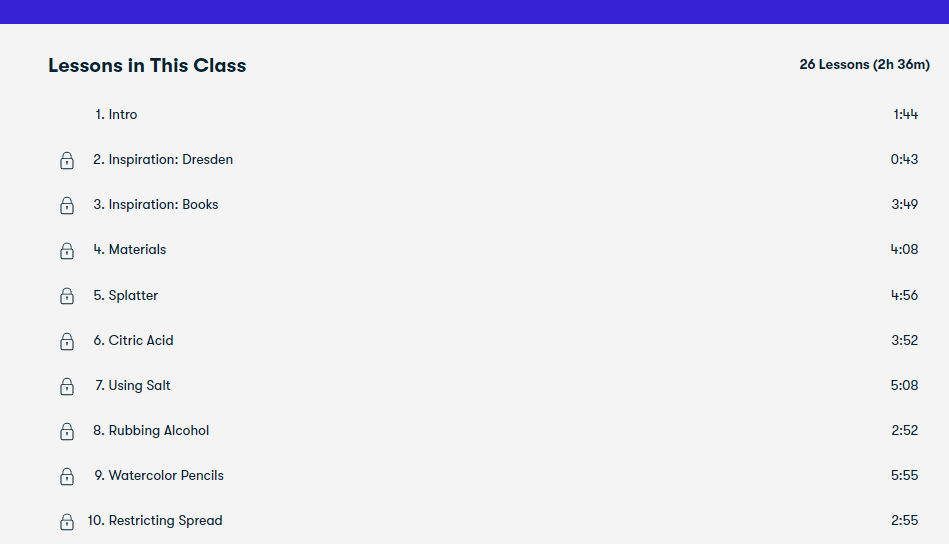
Skillshare lessons come in the form of pre-recorded videos. Most of these videos are short but some lessons are slightly longer – all the videos are engaging and easy to follow though. One potential downside is that there’s usually no downloadable reading material. On the upside, however, the courses are relatively short and lightweight, so you can easily complete them, even if you’re hard-pressed for time.
LinkedIn Learning
If you look at any LinkedIn Learning review, chances are that one of the first things you’ll notice is the quality of the instructors and, by extension, the courses they teach. The platform has a strict policy about its lecturers and only employs experienced experts.
However, this doesn’t necessarily mean you’ll find the course you want right away. LinkedIn Learning doesn’t offer course reviews nor does the platform always classify courses by proficiency levels. You might discover the exact course you want, but it could turn out to be for beginners when you needed an intermediate-level course.
There’s a significant advantage to this platform, though. Completing a course will earn you a LinkedIn Learning certificate. While this certificate isn’t formally acknowledged, it serves as a testimony to the skills you’ve improved on and is a useful addition to your resume.
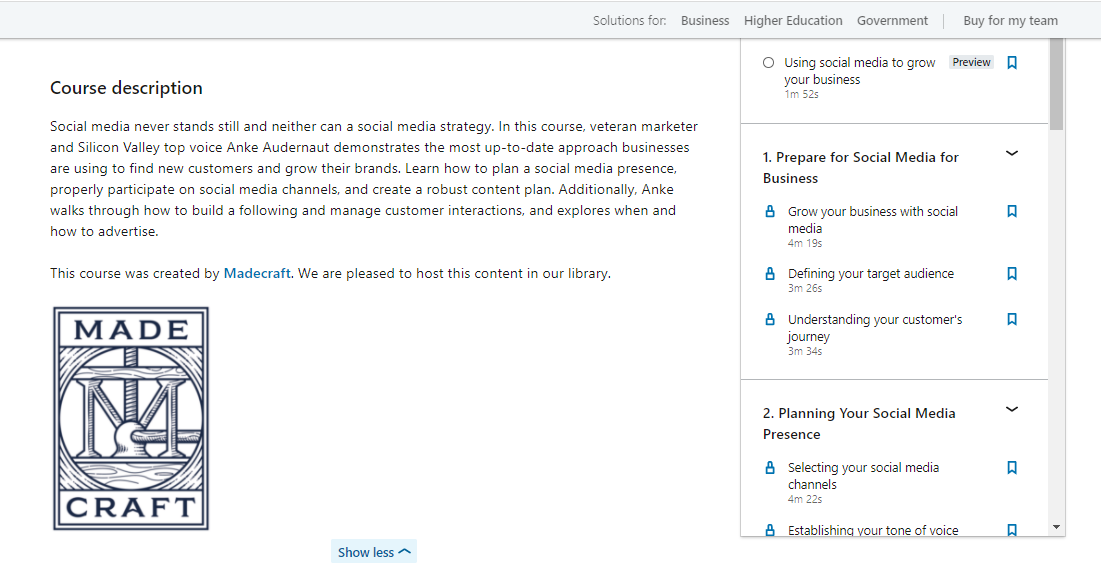
The primary medium for LinkedIn Learning classes is video. In addition, learners also receive files with exercises and quizzes, and all video classes are downloadable on any platform. All of this combined makes it possible to take the courses at your own pace. This is a useful perk since some LinkedIn Learning courses can be quite extensive and take up to several months to finish.
The Verdict
Although Skillshare and LinkedIn Learning are similar in some ways, there are some notable differences between the two eLearning sites.
The first consideration is pricing. It’s hard to overlook the fact that you can get courses on Skillshare free of charge, while on LinkedIn Learning, that’s not an option. Moving forward to subscription plans, Skillshare once again looks more tempting compared to how much LinkedIn Learning subscriptions cost.
In terms of quality, LinkedIn Learning stands out. The platform’s vetting process for lecturers implies that courses are of the best quality every time. Yet, according to user experiences, there’s no evidence to suggest that most courses on Skillshare are any less well-crafted.
However, the most important aspect is the question of intended use. While Skillshare does have courses that can help you propel your career and grow as a professional, many of them are geared towards enthusiasts and people looking to expand their knowledge for personal purposes.
LinkedIn Learning, however, has a strong focus on professional and career development. This becomes especially apparent when you consider that you can pair the platform with the main LinkedIn website, where potential employers can see the certifications you’ve earned.
Ultimately, your choice will depend on personal preference and needs. Now that you’ve learned the crucial details about each site, you’ll have a much easier time reaching a decision.
